No products in the cart.
Solanum stipuloideum
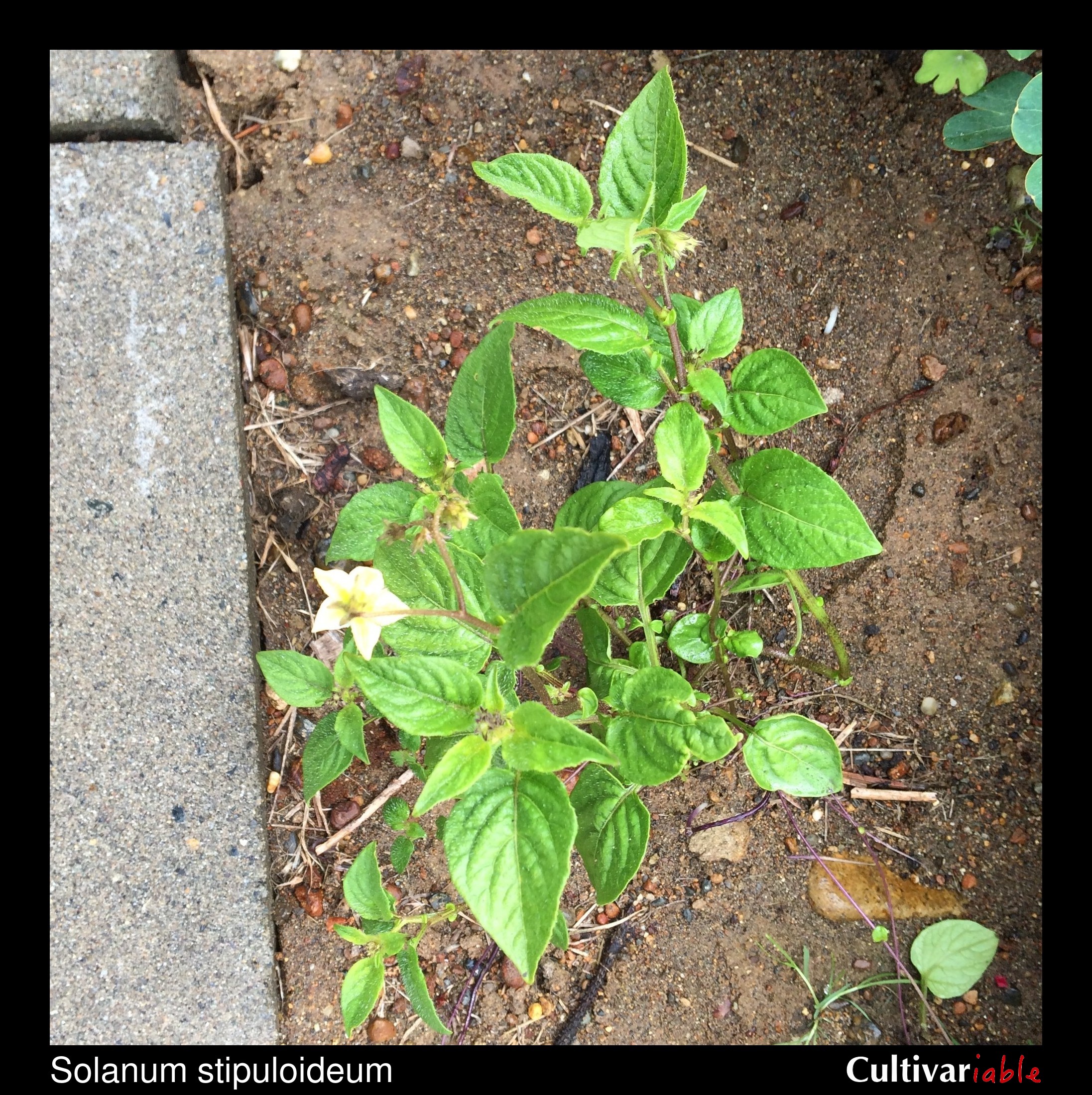
| Common Names | Monte ch’ogue, Monte phureja |
| Code | stp |
| Synonyms | S. capsicibaccatum, S. circaefolium, S. soestii |
| Clade | Neo |
| Series | Circaefolia |
| Ploidy | Diploid (2x) |
| EBN | 1 |
| Tuberization Photoperiod | Unknown |
| Self-compatibility | No |
| Nuclear Genome | Unknown |
| Cytoplasmic Genome | W |
| Citation | Rusby: Bull. New York Bot. Gard 4: 419. 1907 |
Description
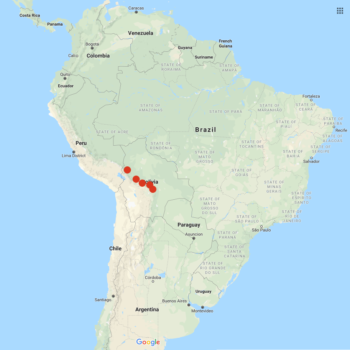
Solanum stipuloideum is a wild potato species native to northwest and central Bolivia. Primarily a woodland species, growing in moist soils (Ochoa 2004). Leaves nearly simple, with just a few small, interjected leaflets. Plants about 12 to 18 inches tall. White flowers. Berries long and pointed.
The specific epithet, stipuloideum, refers to the presence of stupules. It is formed from the Latin word “stipulum,” for “stipule,” and the Greek suffix “-oides,” for “like.” While there is no completely standardized pronunciation for scientific names, the most common way to pronounce this species is probably so-LAY-num stip-yoo-LOY-dee-um.
S. stipuloideum and its close relative S. neocardenasii appear to be the closest South American relatives to the North American wild potato species (Spooner 2018).
Resistances
This species can survive frosts down to 26 degrees F (-3.5 C) (Li 1977, as S. capsibaccatum). Vega (1995) found that this species (as S. circaefolium) is about as frost tolerant as domesticated potato.
Pelletier (1999) observed that this species does not bear glandular trichomes as S. berthaultii does, but deters Colorado potato beetle similarly, and suggested that it probably produces semiochemicals that are responsible for the deterrence.
| Condition | Type | Level of Resistance | Source |
|---|---|---|---|
| Globodera rostochiensis (Potato Cyst/Golden Nematode) | Invertebrate | Somewhat Resistant | Machida-Hirano 2015 (as S. circaefolium) |
| Leptinotarsa decemlineata (Colorado Potato Beetle) | Invertebrate | Somewhat Resistant | Machida-Hirano 2015 (as S. circaefolium), Pelletier 1999 (as S. capsibaccatum) |
| Macrosiphum euphorbiae (Potato Aphid) | Invertebrate | Resistant | Alvarez 2006 |
| Meloidogyne spp. (Root Knot Nematode) | Invertebrate | Somewhat Resistant | Machida-Hirano 2015 (as S. circaefolium) |
| Myzus persicae (Green Peach Aphid) | Invertebrate | Somewhat Resistant | Machida-Hirano 2015 (as S. circaefolium) |
| Phytophthora infestans (Late Blight) | Fungus | Somewhat Resistant | Machida-Hirano 2015 (as S. circaefolium) |
| Phytophthora infestans (Late Blight) | Fungus | Some resistance | Karki 2020 |
| Synchytrium endobioticum (Wart) | Fungus | Somewhat Resistant | Machida-Hirano 2015 (as S. circaefolium) |
Glykoalkaloid content
Images
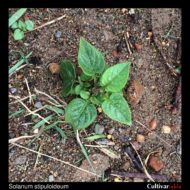 | 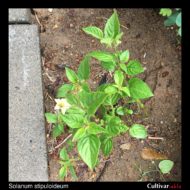 | 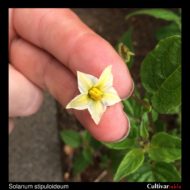 | 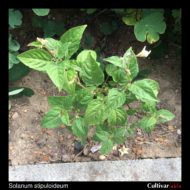 |
Cultivation
Breeding
Crosses with S. tuberosum
| Female | Male | Berry Set | Seed Set | Ploidy | Germ | Source |
|---|---|---|---|---|---|---|
| S. tuberosum | S. stipuloideum (as S. capsibaccatum and S. circaefolium) | Minimal | Moderate | Jackson (1999) | ||
| S. stipuloideum (as S. capsibaccatum and S. circaefolium) | S. tuberosum | None | None | Jackson (1999) | ||
Crosses with other species
Watanabe (1991) found that 5.6% of varieties of this species (as S. circaefolium) produced 2n pollen and Jackson (1999) found 4-7%, which would be effectively tetraploid and 2EBN.
| Female | Male | Berry Set | Seed Set | Ploidy | Germ | Source |
|---|---|---|---|---|---|---|
